The Cheesiest Issue
A day with cheesemakers and an evening with a cheese-inspired meal
I’m writing this in fits and spurts while sitting in various seminar rooms in Gothenburg, where over 2,000 investigative journalists have descended for the Global Investigative Journalism Conference.
It’s been both utterly invigorating and totally exhausting to see old friends and colleagues, make new connections, and learn new ways to expose the baddies and keep the powerful accountable. There won’t be Three Good Reads this issue because this conference is both great and nuts.
So it’s a good thing that Juan, the Colombian chef I’m featuring this week, is a thoughtful and articulate champion of how to improve our food systems and I’m just going to let him do most of the talking.
Bra is a small town in Piedmont and the birthplace of the Slow Food movement. Last week, it hosted the Slow Cheese, a biennial festival where raw milk aficionados, cheese connoisseurs, and artisans of diary products from Italy and elsewhere congregate to talk, taste, share knowledge, and strategise.
It is a much smaller - and therefore less overwhelming - version of the Terra Madre Salone Del Gusto, the Slow Food movement’s flagship extravaganza that is also held every two years. Slow Cheese also had multiple street food areas to sample all sorts of craft beer. Fermenters of the world unite!
There were talks on challenges faced by small-scale farmers who are caring for both their animals and the planet, the need to save meadows, and how to move away from intensive farming. I met passionate farmers who care about their craft and who are doing really interesting and innovative things. I hope to cover some of them in the coming issues so watch this space.
I spent the day wandering along Bra’s cobbled stone alleyways and neat avenues, where stalls from all over Italy and 14 other countries proudly displayed their wares and offered morsels of cheese to passersby.
Later in the day, I had the opportunity to speak to a young chef whose ethos for food and energy for creativity left me invigorated. So I thought it’s only fair that I share the conversation here. The conversation below has been edited for length and clarity.
Juan Camilo Quintero was born and raised in Bogotá, Colombia, where he learnt to cook at a young age.
But it was more like “a passionate hobby” and he never considered it as a possible career path because nearly 20 years ago, “chefs were not on television everyday and it was kind of rare in the Colombia society to see culinary as a profession”, he said.
So he dutifully went to university, but feeling unfulfilled, decided to enrol in a culinary school in Bogotá. He discovered this was his happy place.
After two years and a diploma, he applied for and received a scholarship at the University of Gastronomic Sciences in Pollenzo, another small town a 10-minute drive from Bra.
For three and a half years, he studied at the university, established in 2004 by Slow Food in collaboration with the Piedmont and Emilia-Romagna regional authorities.
The school is set in a stunning UNESCO World Heritage site - a complex of red-brick buildings that was commissioned by King Carlo Alberto of Savoy starting from 1832. Someone saw the look on my face when I got there, grinned, and said, “Yes, this is our Hogwarts.”
Juan was back at the university that day to cook a delicious dinner as part of the Slow Cheese festival.
In 2019, Juan became the Executive Chef at Borgo San Felice, a beautiful hotel nestled in a historic medieval hamlet in Tuscany’s Chianti wine region. This was after stints at two superstar kitchens - San Sebastian’s Restaurante Arzak and Modena’s Osteria Francescana - and as executive chef of a Tuscany winery.
A year later, just as he was working to shape the hotel’s two restaurants, COVID-19 hit Italy. Despite this, the food impressed diners and critics alike.
One of Borgo San Felice’s onsite restaurants, Poggio Rosso, already has one Michelin star, but perhaps equally impressive is the fact that the restaurant also holds a Green Star in recognition of its sustainability efforts.
Q: Was there any particular reason why you chose to study in Pollenzo? Was it because of your interest in Italian cuisine or something else?
A: It was a mix between the interest I had for Italian culture around food and also for Carlo Petrini’s ideas.
I read about Slow Food and some of his books so I was fascinated about the idea of a university with the multidisciplinary approach on food. As a chef, I think it is very useful to study (that) because you usually spend your whole life in a kitchen and (this course gives) an overview of many things. It was unforgettable.
Q: I guess that was different to the culinary school in Colombia, right?
A: The one in Colombia was about culinary art, so the kitchen, mise en plus, cooking meat, fish, stocks. Here, we studied anthropology, chemistry, history of food, history of cooking, European law and policy on food, gardening, things like this.
I would say 95% of my classmates work in the food field but not cooking. They work in food production, wineries, marketing or maybe started their own businesses.
Q: Is that where you learnt or became more interested in sustainability?
A: I read this word for the first time in Carlo Petrini’s books. But for sure what changed my mind and my vision of the food world was studying here. Absolutely.
Q: Since then, you've worked with some of the biggest names in the industry, like Massimo Bottura and Juan Mari Arzak and his daughter Elena Arzak. Did those experiences have an impact on how you cook and how you source the food, etc?
A: I think when you're a chef, you want to be like the chef (who’s your boss). He is like your professor. When you work for Massimo Bottura, he has a very strong personality and ideas that you aim to learn and make them part of your own philosophy. Of course everything has to be (applicable) to wherever your restaurant is and also your own background because fine dining is often about a very personal idea of the world of ingredients and food.
So the fact that I am Colombian, that I spent 20 years there, that I am a son of immigrants - my mother lives in the United States since many years - means I always have this international view of the world of cooking, of recipes, and developed in my style of cooking. I try to be very aware of the sourcing of our ingredients. Often, I think about far away places to get inspired.
I’d say in the last five, 10 years, sustainability is very linked with being 100% local. I do believe that we have to be a little more flexible. Otherwise we are building a fake vision. So for me, your personal vision of food has to be of the people you work with, where you come from, how you see the world, what you like.
Often, when I don’t know what to put on the menu, the easiest answer for me is what I like to eat. That resolves a lot of problems.
Q: I think I know what you mean. What you're trying to say is that you can't be dogmatic.
A: Exactly.
Q: Tell me more about how you decide what to cook. You said it is based on what you like to eat. But how do you come up with a menu?
A: San Felice is a country hotel in the middle of that vineyards in Chianti. Being in the countryside, our main inspiration is our own products from the garden, and the typical products of Chianti. That means seasonality. We tried to build an idea based on the freshness of every ingredient.
Like I told you, sometimes we get inspirations from another country or see techniques that belongs to another country. Our menus seem Italian in the sense that we have pasta, rice, things like this, but the flavours are often related with worldwide foods.
Our aim towards sustainability is to use less red meat. We are not vegetarian restaurants but we are slowly reducing red meat on the menu. We also reduce the amount of dishes to be more efficient and use as many parts of the product.
Q: It's interesting to hear you say your menu looks Italian but it actually has other elements. How does that work with consumers? I ask because there is this perception that in Italy, you have to be very traditional with how you cook. But what's your experience?
A: Yeah, that's true. We have a lot of respect for the Italian traditions because of course, the Italian name in the world is due to their capability to keep standards. But this country is very rich in many reasons, including many tourists. The fact that we have people from all around the world allows our ideas to be understood.
Our Italian customers, after they taste the food, they understand it and trust you. It eliminates the fear of trying something new. The fact that they are used to eat delicious foods, because of the richness of the country and the culture, also means they have the skills to enjoy foods that they otherwise would not.
Q: What does sustainability means to you and how do you work it?
A: Oh, wow, that's a very nice question because it's a word that coming to us all the time. It wasn't like this before.
I would personally define it as a fight against the problems of the our society, of humans’ presence in this world. So sustainability isn’t something you can say, “This is the path.” It's a common effort to reduce the impact in the world that our presence as a dominant species has created.
(In terms of how we work) I think that first, you have to prioritise and analyse what you can do. The easiest and most important aspect restaurant chefs can work is in food waste. I think this is an immediate act you can do.
Then we think about energy. I'm fortunate because our hotel is mostly (powered) by clean energy like wind and solar.
We also have a “Happy Garden” which is a different vision of sustainability. It’s a social thing. This garden is where I source vegetables. The work here is done by a team of four guys with disabilities. They have fully paid jobs. It’s a company project that started more than 10 years ago but every year we have an evolution in terms of the agronomic quality. For example, this year, our new product is the eggs.
Then on the culinary aspects, I like to work with commodities like coffee and chocolate.
Q: Your Colombian roots are showing here.
A: Yeah (laughs). Some people say, “We only use local foods” but they still serve coffee and have a huge wine list. It's a big paradox.
I think buying stuff from South America is correct as long as you are sure the impact of this purchase is helping people's lives. I mean, poor families and farmers. For example, in the chocolate case, we only use sustainable chocolate that comes from Colombia with a lot of certifications. All their products are related to giving land, credit and resources to small families to grow the cocoa.
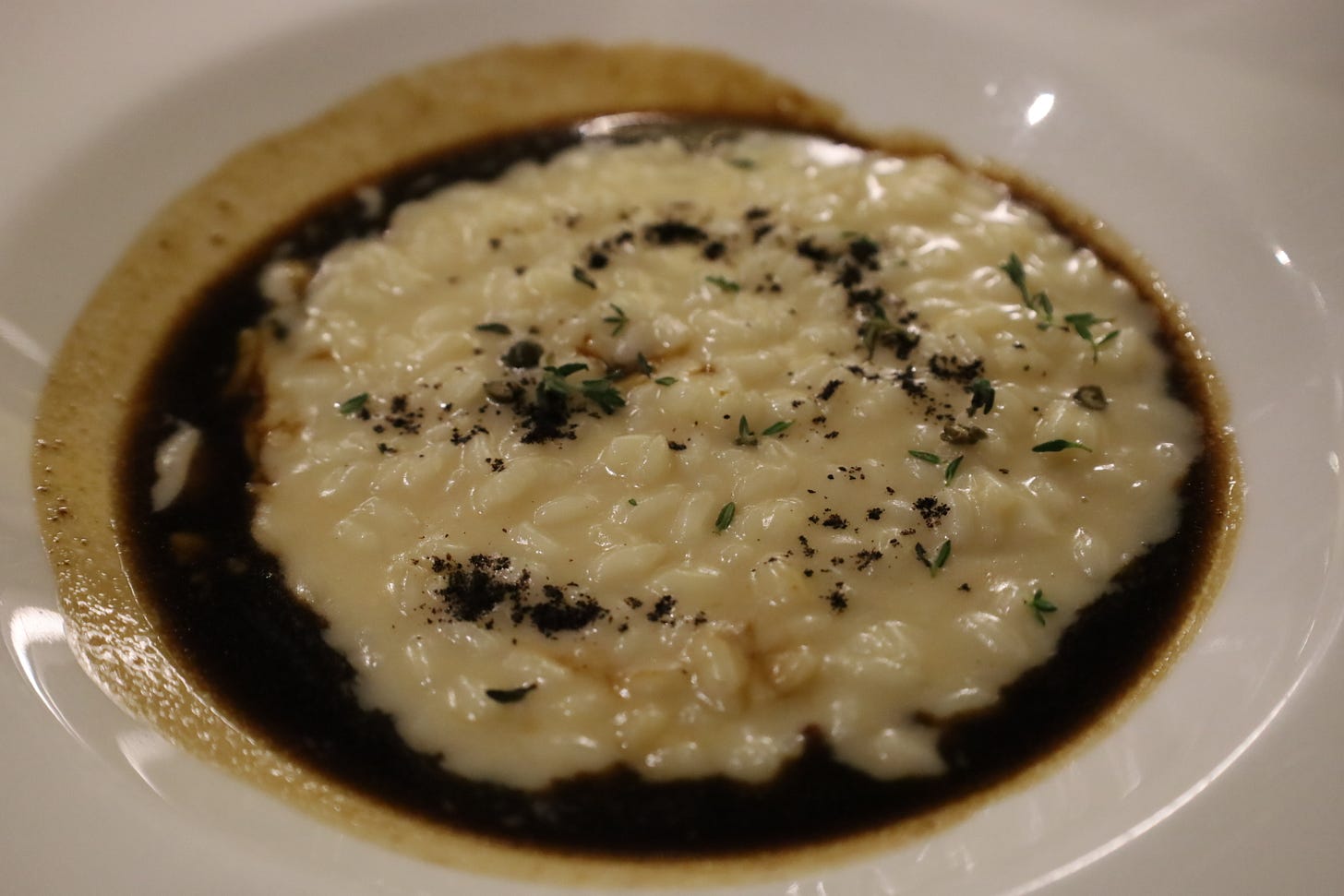
Q: Speaking of improving people’s life, there are all these discussions in Brussels, Washington DC and the United Nations about transforming the food systems because the current systems are not environmentally sustainable, keep farmers poor, and there’s all these ultra processed foods that are not healthy. Where do you think chefs fit in that debate? Or do you think chefs should focus on providing joy to people through good food?
A: Yeah, that’s the nice part of talking about sustainability because it teaches us chefs that our job isn’t just to give this nice time at the table to people. We can do something else.
As I see the world now, it’s like a leading role. Like now, everything is about communications so I think we have a role to inspire and teach people.
A very important part is also what people do at home. The impact of the restaurant businesses is very strong but the sum of all the households in terms of how food is sourced, wasted, and prepared, can be shaped a little bit by the leadership of chefs.
Q: I think consumers, or at least Italian consumers anyway, already know it's good to support as much local food production as possible and eat seasonally. What can they do besides that?
A: All of that is true. But I think people don't pay attention to what has more impact.
The first step is to stop eating red meat in large amounts. That helps much more. The origin or the source of the fish is also very important. I would put in the second place.
Again, the food waste issue. Developing our ability to use as much as we can of a product… and who can help do that? Chefs, because you can teach people what to do with the leaves, the stems.
I would add another one: to help poor countries and buying products that comes from another part of the world. It doesn't match with buying local but I believe that if you can help a Colombian farmer, you should because sustainability is also a social thing.
Q: Perhaps I should have asked this right at the beginning. How does it feel to have a Michelin star pretty soon after you took over the restaurant?
A: I think for the team, it’s nice to be recognised. It’s like motivation to keep working in that direction because sometimes you think that you're doing the right thing but you need someone to tell you that. So it's nice, as long as you're not obsessed with it.
Q: Last question. Besides the restaurants that you run, what's your favourite restaurant in Italy?
A: That's a very hard question!
There is a chef that everybody knows in Italy - Mauro Uliassi in Marche. I had an incredible meal there. In Colombia, I like Leonor Espinosa. The restaurant is LEO in Bogotá. These are the two restaurants I recommend.
As always, please feel free to share this post and send tips and thoughts on mastodon @ThinInk@journa.host, my LinkedIn page, twitter @thinink, or via e-mail thin@thin-ink.net.


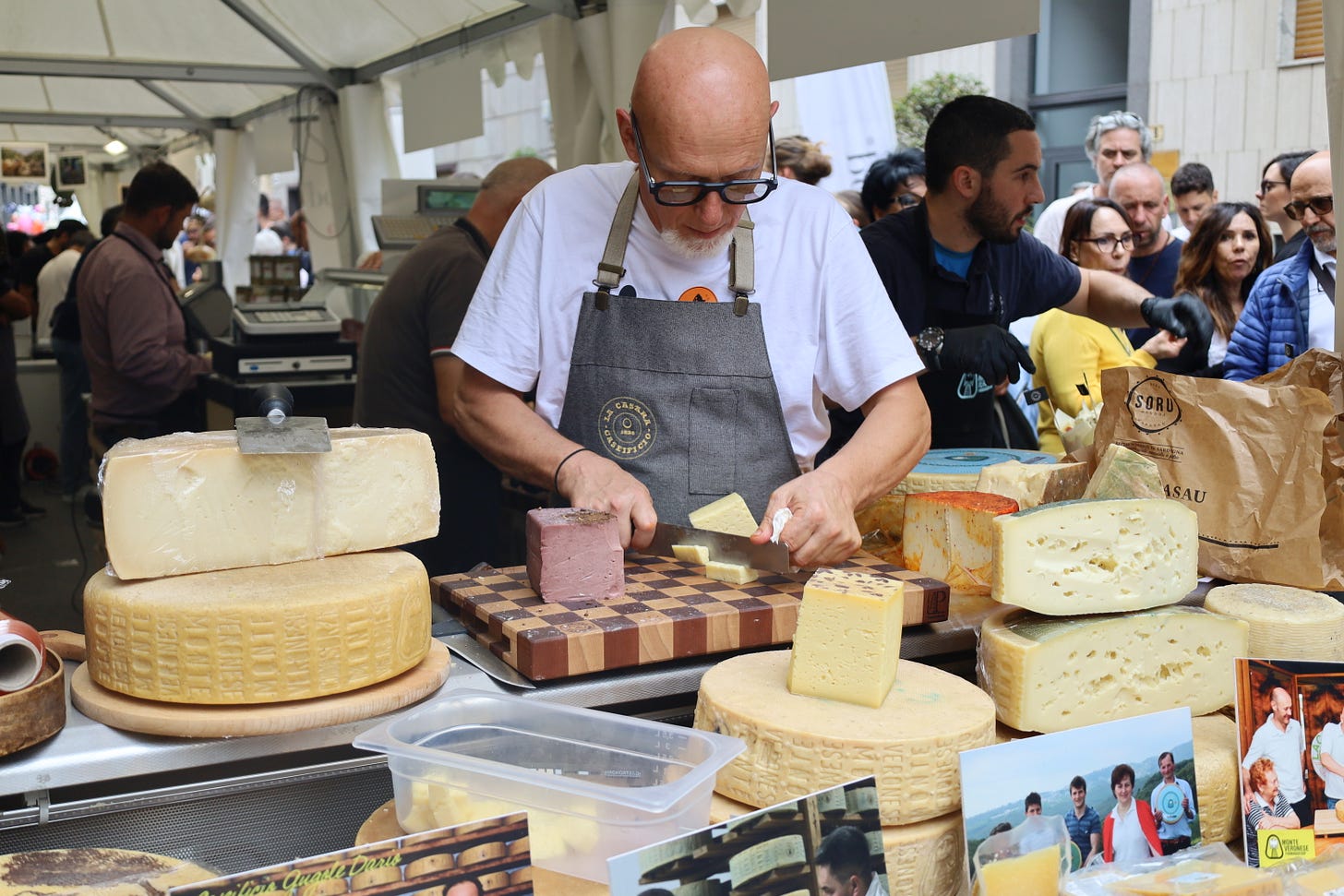
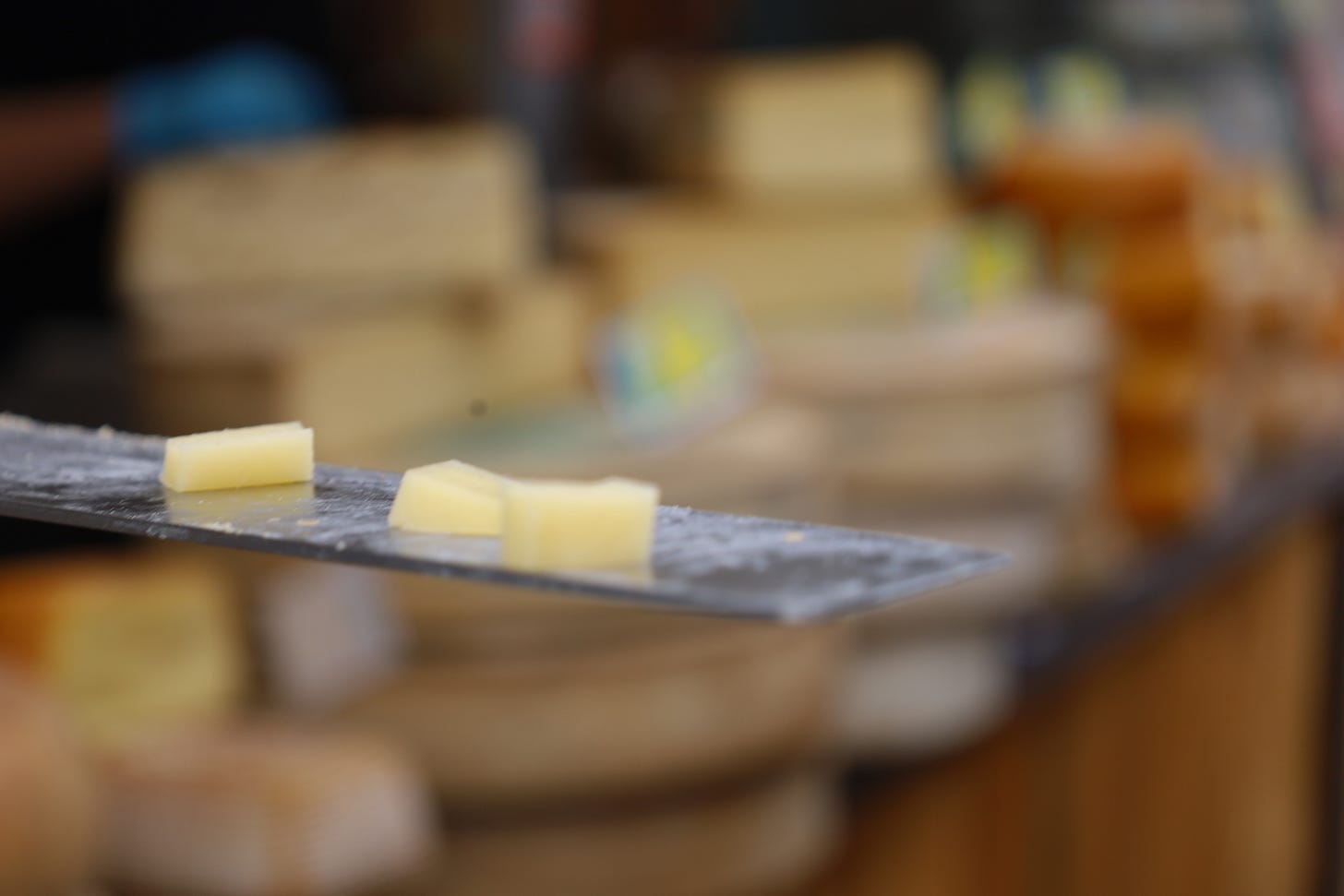
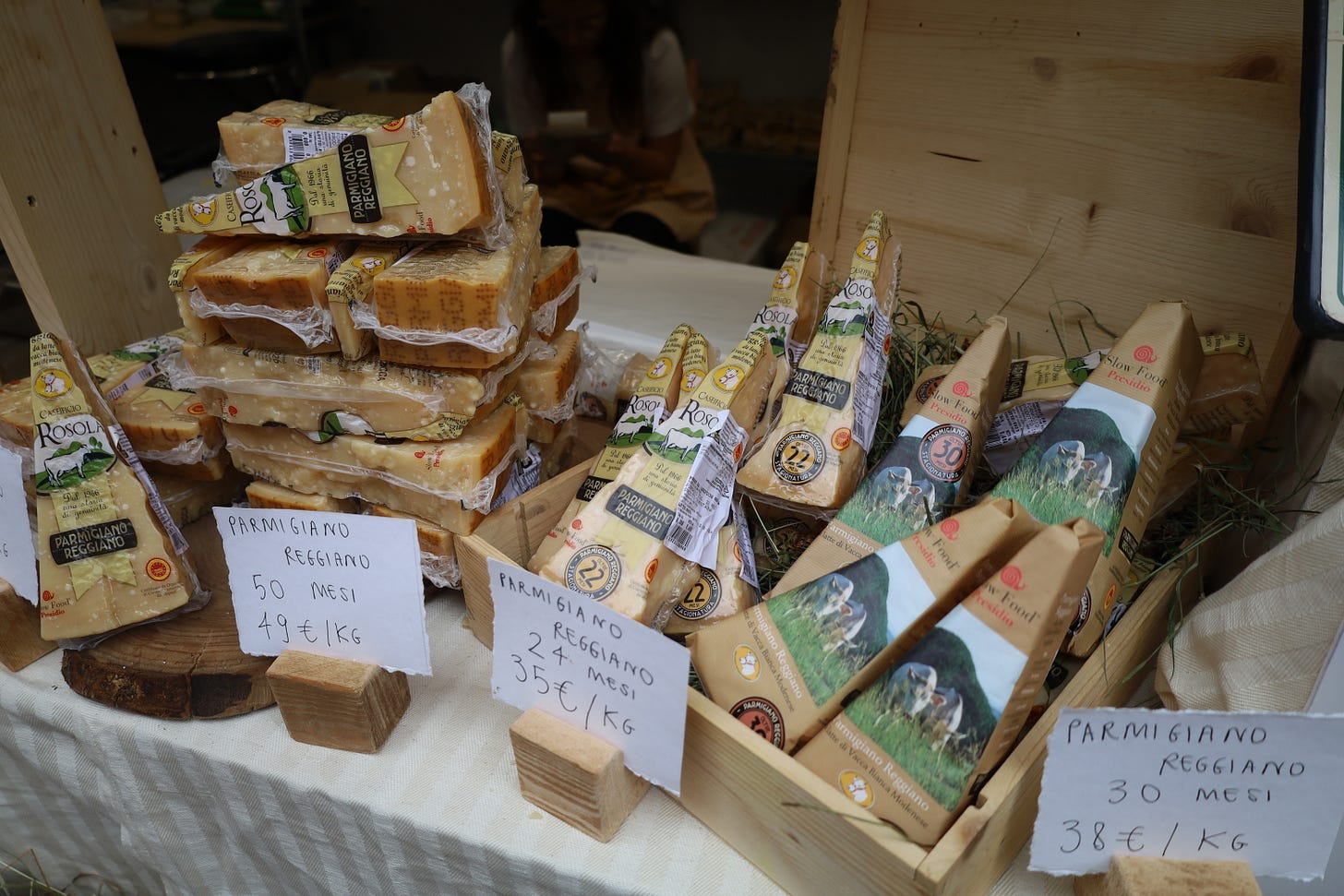
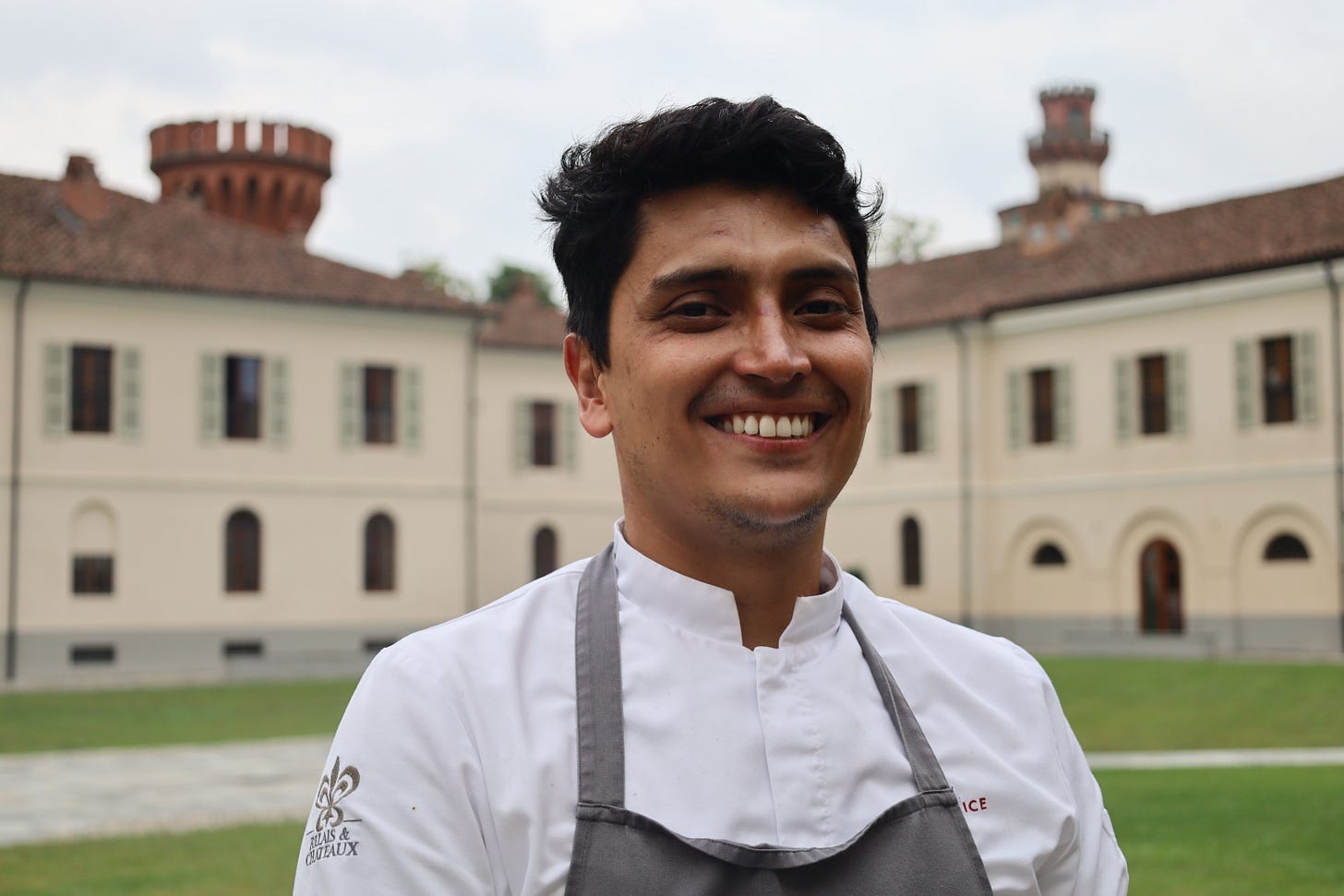
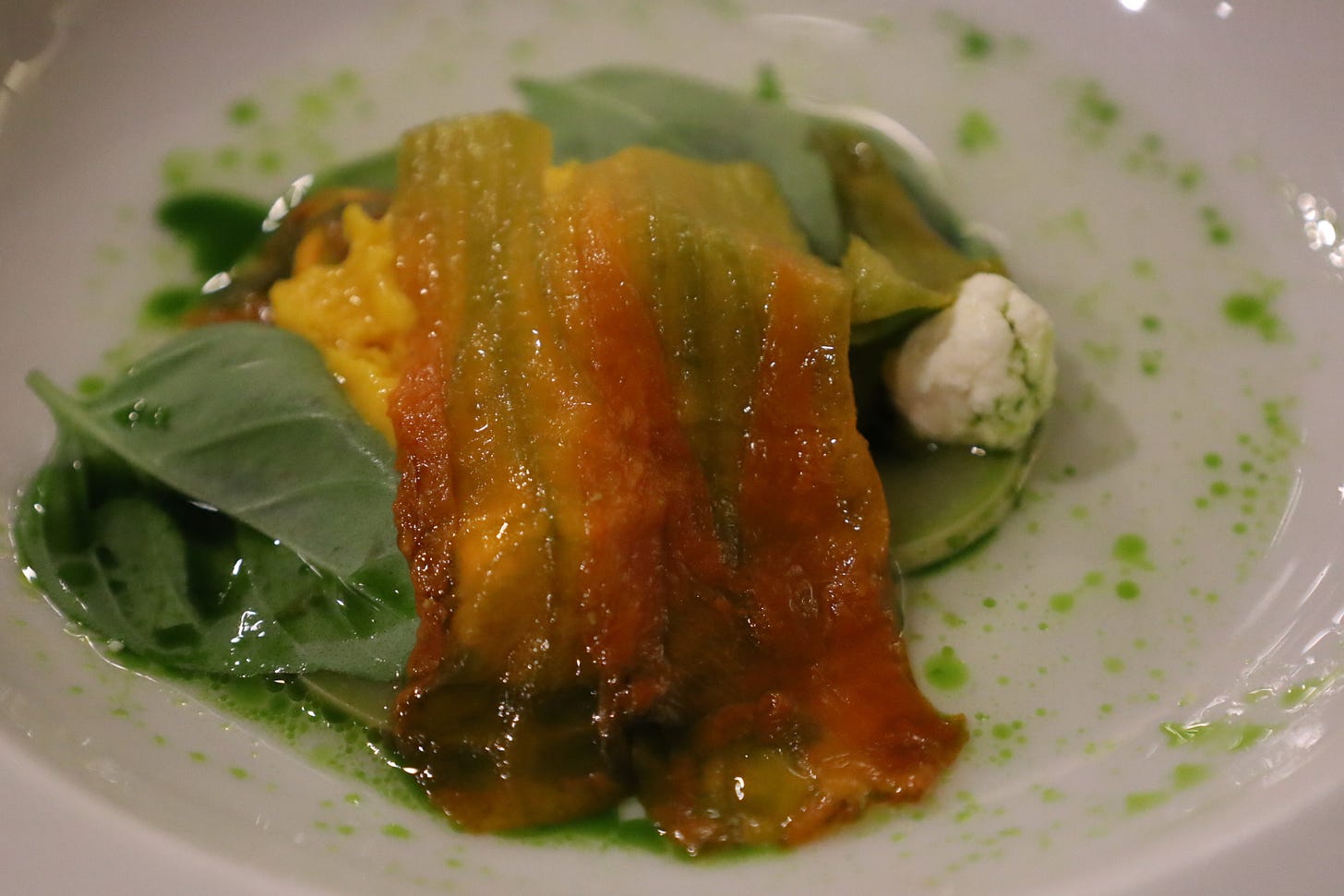


I feel quite conflicted about cheese. On the one hand I know it's nearly as bad in so many ways as meat, worse in terms of ghg emissions than chicken, that dairy cows burp as much methane as beef ones and use as much land and resources, that dairy is often more cruel than beef - round here (in Brittany) I see beef calves long at foot in family groups in woodsy green fields, while at our most local, organic, small scale, artisan cheese maker/dairy farmer (lovely people, lovely cheese), sad, separated, calves in pens suck on anything they can find (fences, bucket handles, fingers...) while the whey from their mothers' milk goes to the pigs around the corner.
But still I find it very hard to walk past his stall on the market, with its rounds of the most luscious, creamy soft rind cheeses (remarkably inexpensive too, as they only bring it themselves from a couple of km away) or indeed that of the Italian deli man, where the great hunks of parmesan and pecorino, big wooden drums of oozing gorgonzola, huge wedges of perfectly holed, almost translucent Emmental and Gruyere, and the rest, seem to me to have the same awe-inspiring beauty and cultural and historical richness and resonance as any landscape or work of art or architecture! I buy olives and sun-dried tomatoes and fresh gnocchi and pasta, and occasionally succumb to a morsel of cheese, or even a few 'chutes' of ham and sausage to sprinkle like spice on my mostly plant-based dishes, all the while knowing that this ain't how we're going to be able to feed 8 billion people. Sigh.
I go on reading people like you, whom I appreciate very much, and trying to educate myself, at least to be aware of my cognitive dissonance.